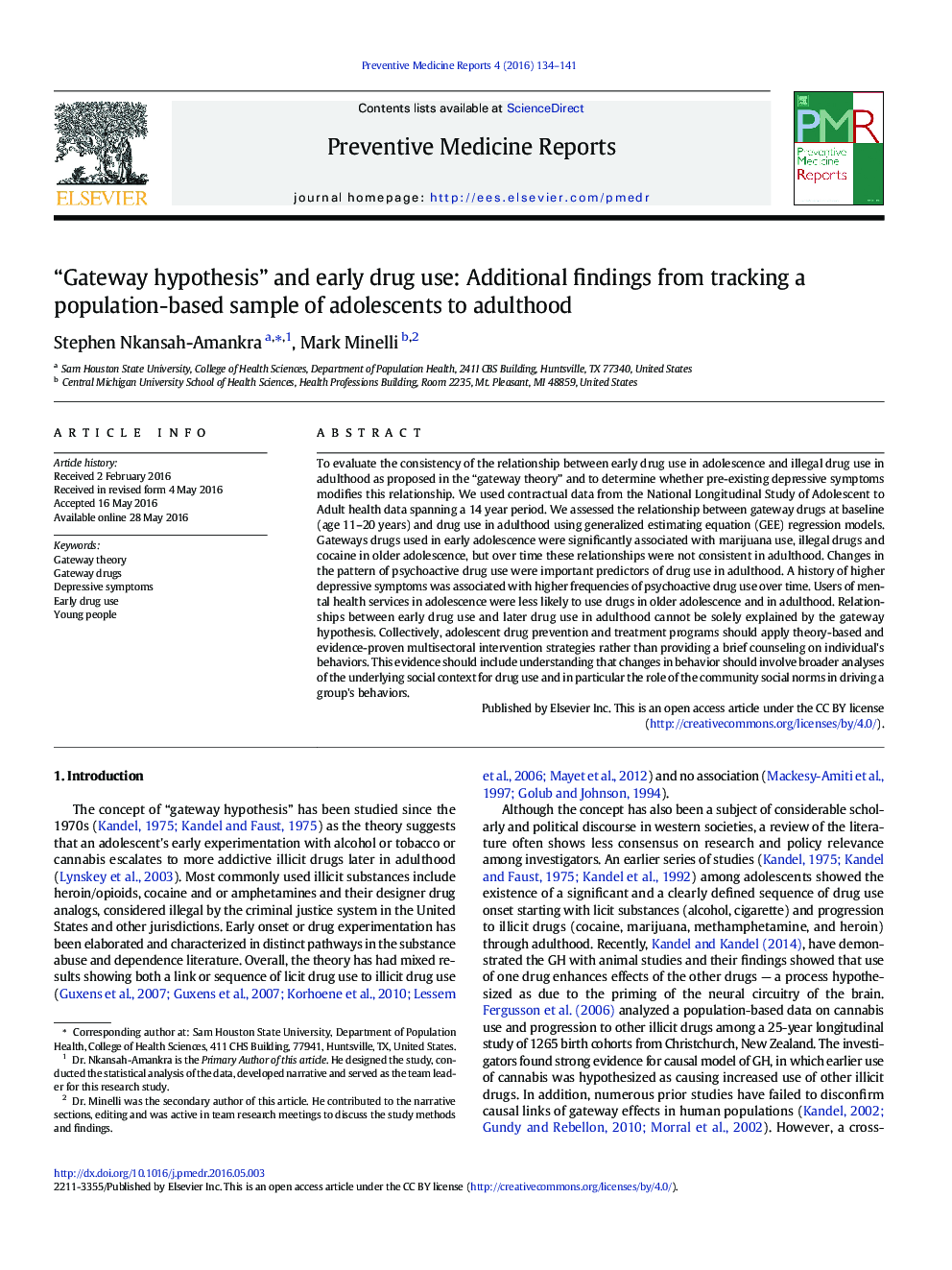| Article ID | Journal | Published Year | Pages | File Type |
|---|---|---|---|---|
| 4202254 | Preventive Medicine Reports | 2016 | 8 Pages |
•Evidence shows early use of legal drugs increase risks of illicit drug progression.•It is unclear if adolescents at different stages, experience drug use in adulthood.•We used a nationally-based longitudinal data to evaluate these relationships.•Early drug initiation increased risks of drug progression but not in adulthood.•GH might be inadequate to explain drug use over time.
To evaluate the consistency of the relationship between early drug use in adolescence and illegal drug use in adulthood as proposed in the “gateway theory” and to determine whether pre-existing depressive symptoms modifies this relationship. We used contractual data from the National Longitudinal Study of Adolescent to Adult health data spanning a 14 year period. We assessed the relationship between gateway drugs at baseline (age 11–20 years) and drug use in adulthood using generalized estimating equation (GEE) regression models. Gateways drugs used in early adolescence were significantly associated with marijuana use, illegal drugs and cocaine in older adolescence, but over time these relationships were not consistent in adulthood. Changes in the pattern of psychoactive drug use were important predictors of drug use in adulthood. A history of higher depressive symptoms was associated with higher frequencies of psychoactive drug use over time. Users of mental health services in adolescence were less likely to use drugs in older adolescence and in adulthood. Relationships between early drug use and later drug use in adulthood cannot be solely explained by the gateway hypothesis. Collectively, adolescent drug prevention and treatment programs should apply theory-based and evidence-proven multisectoral intervention strategies rather than providing a brief counseling on individual's behaviors. This evidence should include understanding that changes in behavior should involve broader analyses of the underlying social context for drug use and in particular the role of the community social norms in driving a group's behaviors.
